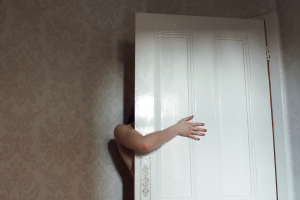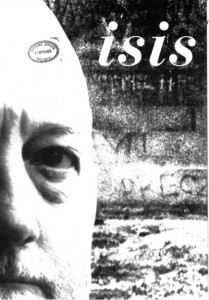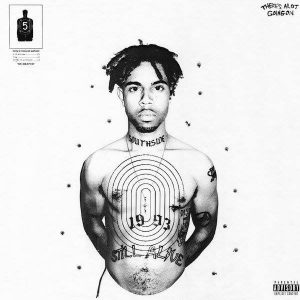
John School: A New ‘Cure’ For The World’s Oldest Profession
by Daisy Fletcher | April 27, 2015
Cynthia is talking to a room of men about her first husband. She married him for a kilo of crack cocaine, only to, only to discover he was a hit man. While they were married she was shot twice – the second time landing her in a coma for three months. It was then that she decided she “needed to get out of the life”. And that is what she is telling her audience to do too.
Cynthia is one of the many ex-prostitutes involved in the First Offender Prostitution Program (FOPP). Set up in 1995 by the police department in San Fransisco, FOPP aims to reduce the demand for commercial sex, rather than just punishing the problem away. When arrested for soliciting a prostitute, the ‘john’ (male client) is given a choice of paying a $1000 fee and attending the FOPP program, or facing the traditional punishment of prosecution and a criminal record. If he chooses the former, he must attend a one-day workshop teaching him about the true nature of the prostitution industry – a bit like a speed awareness course, but for sex.
The day begins in a classroom with a whiteboard headed “Pimp Dynamics”. This first class explains to the john what happens to the money they spend on a prostitute. Most pimps have a financial quota they try to reach, typically around $1200 per night. To make such a huge profit, the girls working under the pimp are usually required to have sex with well over a dozen men every night – depending on their market value. Even after this, very little money makes it back to the prostitutes themselves. One ex-prostitute speaker recounts how she was chewing gum, but when they pimp realized she had bought it without his permission he beat her, for spending ‘his’ money. All the ex-prostitutes who speak in the class describe how they robbed johns to help reach their pimp’s quota, either instead of sex or when the johns were on their way back to their cars. Conveniently, since the johns were acting illegally too, the crimes went unreported.
The next presentation is reminiscent of a school sex education class. The speaker uses a slideshow and handouts, leaving nothing to the imagination as she explains the high risk of contracting an STI when soliciting a prostitute. An average of 64% of johns in the class did not know that they could get an STI from oral sex. Even more worryingly, many johns in the class believed that not wearing a condom was a sign of emotional intimacy with the prostitute. In reality, of course, many prostitutes will lie about having unprotected sex with only their current john, in order to charge a higher fee while passing on a cocktail of STIs.
Sex addiction too is a big problem among johns. After a talk from Sex and Love Addicts Anonymous, about 20% of the johns thought they were addicted to sex and should seek treatment, rather than resorting to paying for a prostitute. When one offender was asked how prostitution has affected his life he claimed, “it made sex very convenient whenever I needed it. That way I didn’t have a chance of raping anybody.”
Indeed, while sex addiction is a problem for the johns, rape is an even bigger problem for problem for the prostitutes. 73% of prostitutes in San Francisco have been raped while providing sex, and 59% of that group have been raped more than five times. Statistics like this are central to the FOPP scheme. The post-class survey found that what struck johns most were the testimonials given by survivors of the sex trade. Their accounts reveal quite how dangerous and horrific sex work is, while prompting the johns to reassess their conceptions of ‘whores’ – to see these woman are people, not just sex objects.
A recent study found that prostitutes have a mortality rate almost two hundred times greater than other women with similar demographic profiles. One ex-prostitute talking to the johns described how she was beaten, strangled and raped whilst working, both by her pimp and clients, requiring hospitalization several times. Once she was beaten so badly that her parents did not recognize her. Jennifer, who was kidnapped at gunpoint and forced under the control of a pimp, explains to the johns how prostitutes often have to be “very good actresses”, disguising the real desperation they are living in. She recounts how her pimp forced her to pretend to pretend to enjoy the sex, while really she frequently fantasized about killing her clients during intercourse. She would often lie, claiming that it was her first time, or that the current john was her favorite client, or even that he was especially well endowed, all to get more money. After her speech one enlightened offender claimed he had “never realized hookers were human before”.
Sasha, who started her career as an exotic dancer, explains that girls who end up in prostitution are typically financially and emotionally vulnerable. In San Francisco, the entry age into prostitution is typically between twelve and sixteen, many girls having run away from home after childhoods of sexual and physical abuse. Emma, another speaker, described her persistent molestation in a series of foster homes. While still a young girl she “learned about sex play and not to tell about it”. One recent study even claimed that 90% of prostitutes in San Francisco had lost their virginity in an act of commercial sex. The FOPP scheme aims to teach johns that by paying for sex they are actively reinforcing the cycle of abuse that the prostitutes are trapped in.
Emma was frequently arrested for selling sex, but she returned to prostitution after each release. Having been sexually abused since three, she had such low self-esteem that she thought it was all she could do. Jennifer, on the other hand, married a man to protect herself and to support her financially – while still working as a prostitute. They had children. Later she found out that her husband had been molesting children, and even disgustingly, had given her seven-year-old daughter herpes. Rather than seeking help, Jennifer had to keep working on the streets to support the heroin and crack addictions encourages by her pimp. “The workshop seeks to underline this simple message: by buying sex these johns are partly to blame for the wider problems the transaction creates – placing the burden of responsibility squarely on the shoulders of the soliciting client. In the history of society’s approach to the problem of prostitution, this is a significant step.
But does the FOPP scheme work? A recent report by the US Department of Justice seems to think so. Nearly ninety-five percent of the men who attend the class successfully complete the programme by avoiding arrest for one year after being caught. Indeed, since the scheme’s introduction in 1995 there has been a sharp drop in reoffending rates in San Fransisco, which have remained low ever since. Then again, these impressive results are not the whole story. The scheme’s efficacy can never be fully established, because even if a john avoids arrest for one year, they may not have given up paying for sex. Offenders could be using prostitutes but avoiding re-arrest, slipping out of sight of the law, or just keeping themselves supper up for a year until the charges are dropped.
Yet financially the scheme has been an unquestionable success. The $1000 fee that the attendees pay not only cover the cost of conducting the classes, but also subsidises police ‘vice’ operations, and recovery programmes for girls trying to get out of the sex trade. Encouraged by the perceived success of the San Fransisco pilot, john schools have been established across the US, in Canada, South Korea and in the UK.
The ‘world’s oldest profession’ is a tag which tends to neutralize prostitution, encouraging the perception of it as a human inevitability. History may suggest that this is so, but as schemes such as John School demonstrate, many governments – in shifting the emphasis from supply to demand – don’t seem ready to give up just yet.




